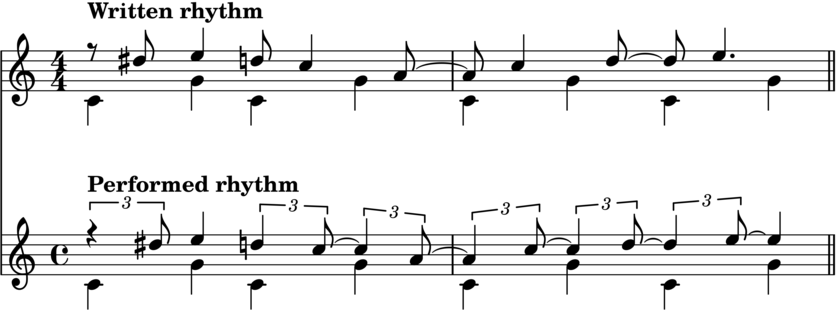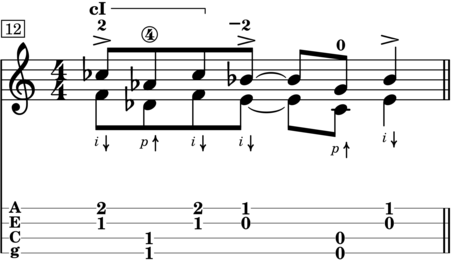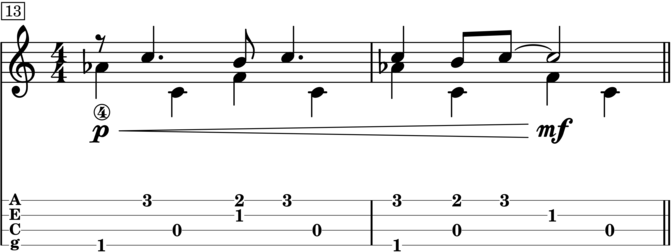Choan Gálvez – Medium Rare, Please (Tab)
Today’s post is a guest post from Choan Galvez taken from his 50 Miniature Studies for Ukulele. It’s turning out to be an excellent series of tunes. You can check them all out on his YouTube channel.
Here are Choan’s performance notes.
These are the tabs for Study No. 33 – Medium Rare, Please, featuring alternating thumb strokes, swing, split strums, staccato, ostinato, harmonics, and, wait for it, The Lick.
As usual, I’ve made plenty of annotations that you can profit or dismise –fingering and stroking annotations are well intentioned suggestions.
Performance notes
Swing!
First thing to note is that this piece is performed with a bluesy swing, so rhythmic notation doesn’t exactly match rhythmic performance. Actually, when the beat is divided in two parts, the former part is played longer and slighty more accented than the latter.
I play close to a 2:1 ratio, so two consecutive eighths are played as a triplet quarter note + triplet eighth. Add the syncopation and you’ll get into a notation hell and a reading nightmare if the rhythms were to be precisely notated. Beware: your eyes may bleed and your head explode when trying to decipher the following example (the first two bars from this study):
Wikipedia has a decent section on Swing as rhytmic style with some good examples and a description of various rhythmic swing approximations.
Alt thumb
Then, most of the bass line is performed in alternate thumb/Travis picking style. I’d suggest to review the performance notes for Study No.7 – Fairly Late and learn that one (and even No. 21 – Exciting Rag, if you’re feeling brave) before attempting this new one.
Staccato
In bar 8 you’ll find some staccato double stops. As these are played at a fast pace, the best way to stop the notes ringing is to slightly release the pressure of the fretting finger without abandoning the string.
Split strums
You’ll find an interesting set of strokes in measure 12. A couple of chords (Db7, C7) are played split, two notes at a time. I choose to strum upwards with the index finger, downwards with the thumb, stroking two strings in each movement.
Note that the arrows in the notation follow the order of the strings in the tablature, so a down arrow means an up stroke. Another notation glitch! (Would you prefer upbow/downbow symbols instead of arrows?)
Ostinato
Second section starts with an ostinato melodic figure, repeated over different harmonies. I do love the effect it creates.
But you should actually practice the second voice line. It consists of a steady thumb picking on the beat, although this time the pattern involves as much as three strings.
You’ll win bonus points if you also get to play the crescendo fluently ;)
The Lick
A conscious and shameless usage of The Lick appears on bar 19.
Harmonics
The piece concludes with a touch of harmonics. Let’s ask an expert: Christopher Davis-Shannon explains how to play harmonics on the ukulele. Thank you, Christopher.
Have fun!





